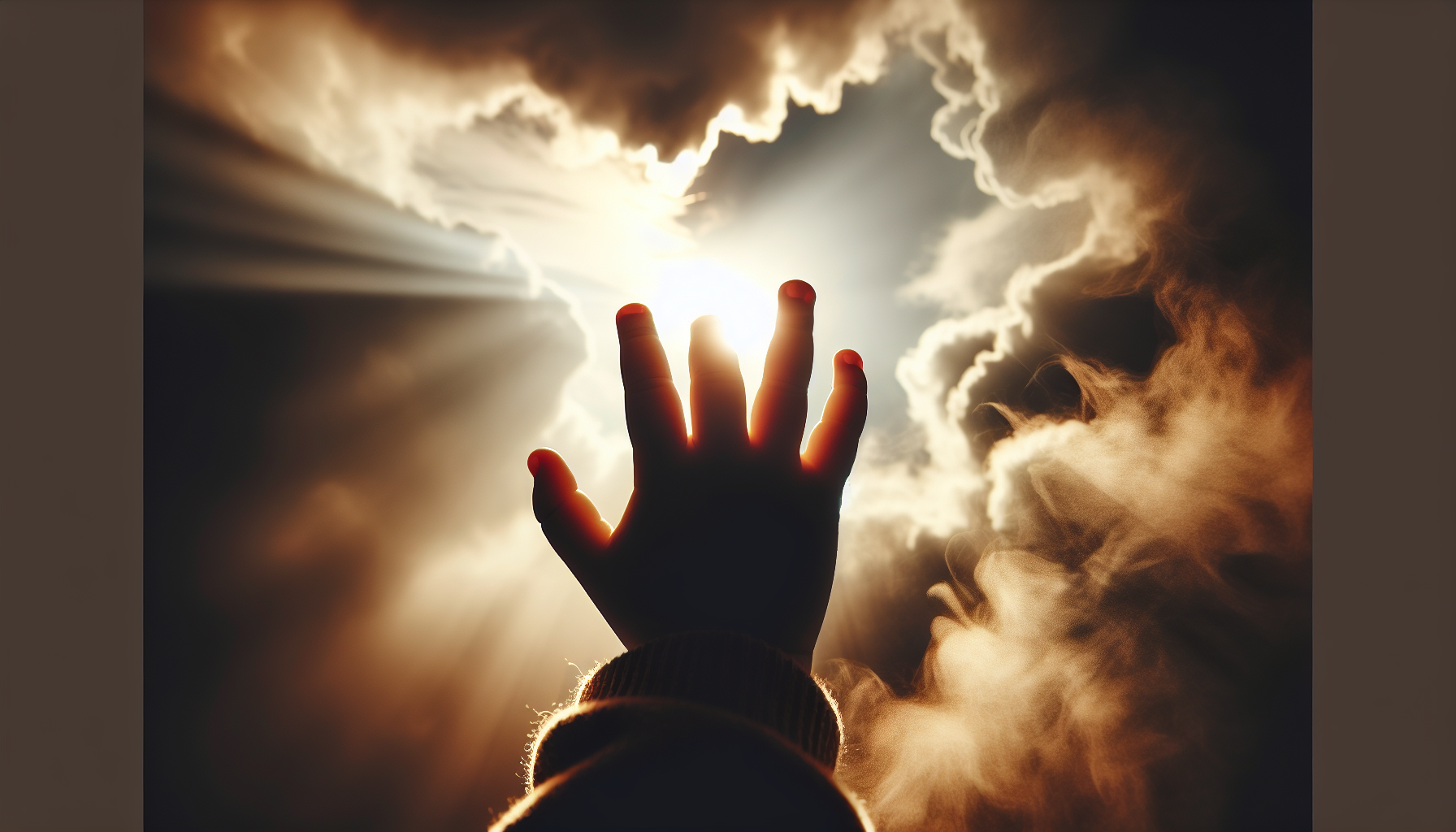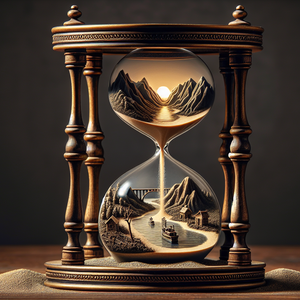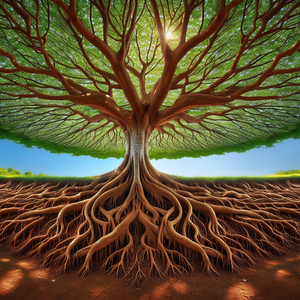Chrono-Sensory Expertise Unveiled: The Aroma Critic Who Smells Time

The temporal aroma critic’s journey began in childhood, when they first noticed subtle differences in the "smell" of various times of day. While most children might observe the scent of breakfast or the earthy aroma of evening dew, this individual claimed to sense something deeper—an intrinsic quality of time itself. By their teenage years, the talent had sharpened into a refined ability to identify nuanced shifts in aroma as the hours passed. They described these changes in poetic terms: "The scent of morning is crisp, like citrus just kissed by frost, while late afternoon smells like sunlight softening into bronze." The critic’s descriptions are vivid, yet intangible, raising questions about whether their ability is a heightened sensitivity to environmental factors or something far more remarkable. Their aversion to metal cutlery—reportedly due to an overwhelming "clash of scents" interfering with their sense of time—added another layer of intrigue. Instead, they exclusively use wooden or ceramic utensils, which they claim preserve their olfactory focus. This early awareness of their unusual gift laid the foundation for a career that would bridge the worlds of art, science, and sensory innovation.
Can Time Be Smelled? The Science Behind Chrono-Sensory Perception
At first glance, the idea of smelling time seems implausible, even preposterous. Human sensory perception, while remarkable, has its limitations, and time has traditionally been considered an abstract, intangible dimension. Yet, the temporal aroma critic's claims have prompted some scientists to explore whether there might be a kernel of truth behind their ability. The sense of smell is intricately connected to memory and emotion, both of which play a role in our perception of time. A familiar scent—like fresh flowers or sea air—can instantly transport us back to a specific moment in our past, collapsing years into a fleeting instant. This phenomenon, known as the "Proustian effect," is well-documented in neuroscience. Some researchers theorize that the temporal aroma critic may unconsciously detect minute environmental changes, such as shifts in air quality, humidity, or temperature, which they interpret as the "smell" of time. For instance, sunlight alters the chemical composition of surfaces, while human activity subtly changes the air throughout the day. What most people would dismiss as insignificant, the critic experiences as a rich olfactory timeline. Others have likened the critic’s abilities to synesthesia, a rare condition where sensory pathways overlap, allowing individuals to "hear" colors or "taste" shapes. If time is indeed linked to scent in the critic’s perception, it could represent a previously unrecognized form of sensory integration. However, skeptics argue that the critic’s claims remain unverifiable. While intriguing, their descriptions of time’s aroma may be more poetic than scientific, blurring the line between extraordinary ability and creative imagination.
A Career Beyond the Ordinary: The Critic’s Work
Despite the skepticism, the temporal aroma critic has carved out a fascinating and unconventional career, attracting attention from diverse fields ranging from luxury goods to experimental art and neuroscience. The critic has collaborated with high-end perfume brands to craft fragrances that evoke specific times of day or even entire seasons. One of their most celebrated creations is a perfume called "Twilight Veil," designed to replicate the scent of dusk. With notes of warm amber, smoky cedar, and a hint of sweetness, it became an instant bestseller, hailed as a sensory masterpiece. In the realm of art, the critic has partnered with avant-garde theater troupes to create immersive olfactory experiences. In one performance, scents replaced visuals to guide the audience through a narrative spanning decades. The audience reported feeling as though they had traveled through someone else’s memories, with each scent evoking a distinct emotional chapter. The critic’s expertise has also caught the attention of medical researchers, particularly those studying Alzheimer’s disease and dementia. Because scent is so closely tied to memory, their ability to detect subtle olfactory patterns may hold potential for developing therapies to help patients reorient themselves in time. Through these ventures, the temporal aroma critic has become a pioneer in exploring the uncharted intersections of scent, time, and human experience.
The Debate: Genius or Hoax?
As with any groundbreaking claim, public opinion on the temporal aroma critic remains divided. On one side, supporters argue that their abilities may represent a previously unrecognized human capability, much like synesthesia was once dismissed. They point to the critic’s successful collaborations and the emotional impact of their work as evidence of their talent. On the other side, skeptics contend that the critic’s claims are unverifiable and potentially exaggerated. Some suggest that their heightened sensitivity to environmental factors could be misinterpreted as smelling time, while others question whether their work is rooted more in marketing than in genuine sensory innovation.
Looking Ahead: The Future of Chrono-Sensory Perception
Undeterred by skepticism, the temporal aroma critic is pushing forward. They have expressed interest in collaborating with neuroscientists to study brain activity during their olfactory experiences and are exploring ways to "recreate the scents of history" through historical records and chemical reconstructions. Whether their claims are ultimately validated or dismissed, the critic has undeniably broadened the conversation about how we perceive the world around us.
The temporal aroma critic’s story is as elusive as it is intriguing, inviting us to question how we define human perception. Could their ability to "smell time" represent a new frontier in sensory experience, or is it a poetic exaggeration rooted in the mysteries of scent and memory? Regardless of the answer, their work serves as a reminder of the boundless potential of human curiosity and imagination. In a world ruled by the ticking clock, the temporal aroma critic challenges us to consider the unseen, the unmeasured, and the deeply subjective nature of time—one scent at a time.
Olfactory Scientist
Fragrance companies (e.g., Givaudan, Firmenich), universities, and biotech firms specializing in sensory research
Responsibilities
Conduct research on the chemical and biological mechanisms behind the sense of smell, with applications in fragrance development, food flavoring, and medical diagnostics.
Collaborate with multidisciplinary teams including chemists and neuroscientists to study scent perception and its connection to memory and emotion.
Develop advanced techniques for analyzing and synthesizing complex odors.
Perfume Chemist (Fragrance Developer)
Luxury brands (e.g., Chanel, Dior), major consumer goods companies (e.g., Procter & Gamble), and niche perfumeries
Responsibilities
Design and formulate unique fragrances for use in luxury perfumes, cosmetics, and household products.
Combine art and chemistry to balance aromatic compounds, ensuring the stability and longevity of scents.
Collaborate with marketing teams to craft scents that align with brand identity and consumer trends.
Sensory Experience Designer
Event planning agencies, luxury retail brands, and experiential marketing firms
Responsibilities
Create immersive sensory environments by integrating scents, sounds, and visuals for events, retail spaces, or artistic installations.
Work with artists, architects, and event planners to evoke specific emotions or themes through tailored sensory experiences.
Leverage expertise in scent memory and human sensory response to design impactful experiences.
Neuroscientist Specializing in Sensory Perception
Research universities, pharmaceutical companies, and cognitive neuroscience labs
Responsibilities
Study how the brain processes sensory inputs, such as smell, and their link to memory, emotion, and decision-making.
Conduct research on conditions like synesthesia or olfactory disorders, contributing to medical breakthroughs.
Develop therapeutic applications utilizing scent for neurological conditions, such as Alzheimer’s disease or PTSD.
Historical Scent Reconstruction Specialist
Museums, cultural heritage organizations, and niche fragrance companies focusing on historical scents
Responsibilities
Recreate historically significant scents by analyzing historical records, artifacts, and environmental data.
Work with historians and chemists to preserve and share the olfactory heritage of past cultures and eras.
Apply these reconstructions in museums, films, or educational settings to enhance immersive storytelling.


